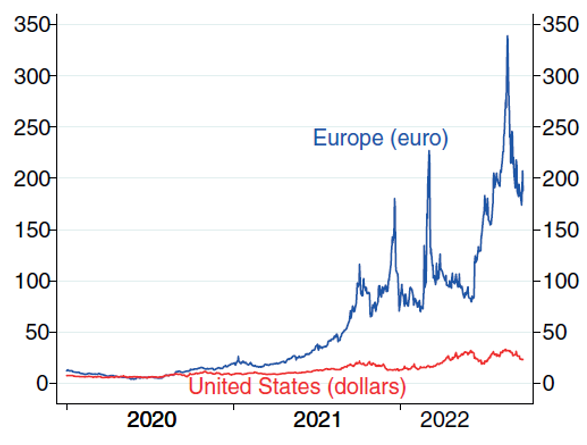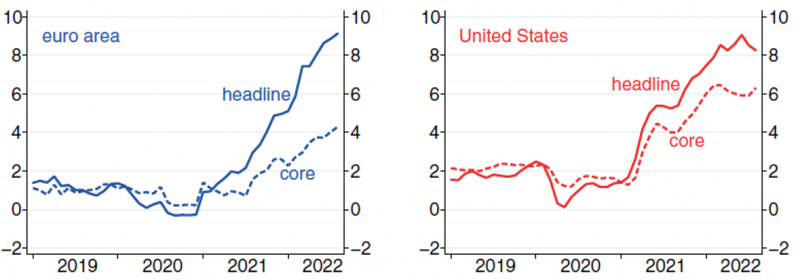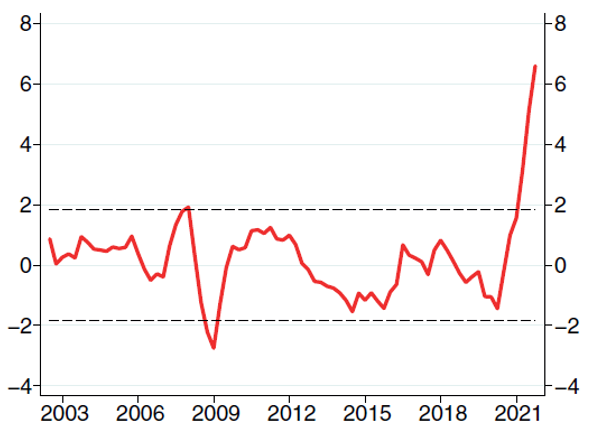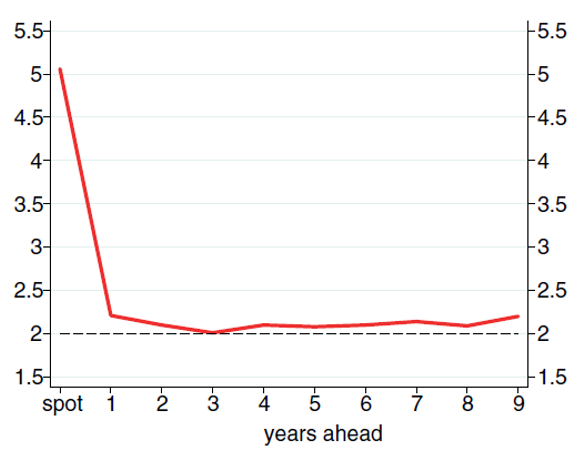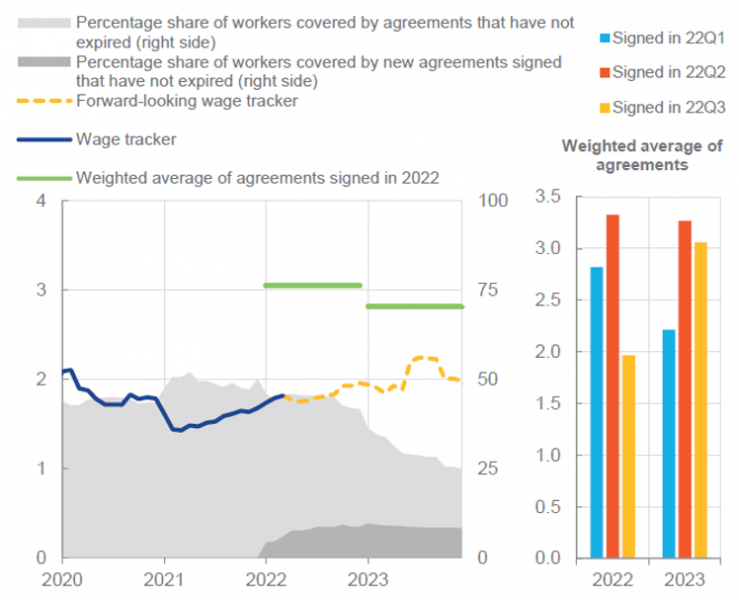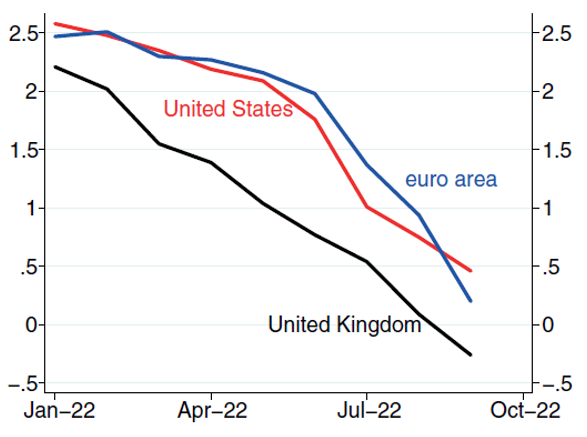References
Blanchard O., Domash A., and Summers L.H. (2022), “Bad News for the Fed from the Beveridge Space”, Peterson Institute for International Economics, Policy Brief, no. 7, July.
Bok B., Petrosky-Nadeau N., Valletta R.G., and Yilma M. (2022), “Finding a Soft Landing along the Beveridge Curve”, Federal Reserve Bank of San Francisco, FRBSF Economic Letter, no. 24, August.
ECB (2022), “What Explains Recent Errors in the Inflation Projections of Eurosystem and ECB staff?”, Economic Bulletin, 3, April.
El-Erian M.A. (2022), “The Fed’s Historic Error”, Project Syndicate, February.
Hernández de Cos P. (2022), Monetary Policy in the Euro Area: Where Do We Stand and Where Are We Going?, Bank of Spain, remarks at the XXI Congreso de Directivos CEDE, Bilbao, September.
Hilscher J., Raviv A., and Reis R. (2022), “How Likely is Inflation Disaster?”, CEPR Discussion Paper, no. 17244.
Kontogeorgos G., and Lambrias K. (2019), “An Analysis of the Eurosystem/ECB Projections”, ECB Working Paper, no. 2291, June.
Lane P. (2022a), The Monetary Policy Strategy of the ECB: The Playbook for Monetary Policy Decisions, European Central Bank, remarks at the Hertie School, Berlin, March.
Lane P. (2022b), Monetary Policy in the Euro Area: The Next Phase, European Central Bank, remarks at the Annual Meeting 2022 of the Central Bank Research Association (CEBRA), Barcelona, August.
Neri S., Bulligan G., Cecchetti S., Corsello F., Papetti A., Riggi M., Rondinelli C., and Tagliabracci A. (2022), “On the Anchoring of Inflation Expectations in the Euro Area”, Bank of Italy, Occasional Papers, no. 712.
Neri S., and Gerali A. (2019), “Natural Rates across the Atlantic”, Journal of Macroeconomics, no. 62.
Obstfeld M. (2022), “Uncoordinated Monetary Policies Risk a Historic Global Slowdown”, Peterson Institute for International Economics, Realtime Economic Issues Watch, September.
Panetta F. (2022), Small Steps in a Dark Room: Guiding Policy on the Path out of the Pandemic, European Central Bank, remarks at the at an online seminar organised by the Robert Schuman Centre for Advanced Studies and the European University Institute, Frankfurt, February.
Reis R. (2021), “Losing the Inflation Anchor”, Brookings Papers on Economic Activity, Fall.
Reis R. (2022), “The Burst of High Inflation in 2021-22: How and Why Did We Get Here?”, London School of Economics, unpublished, June.
Schnabel I. (2022), Monetary Policy and the Great Volatility, European Central Bank, speech at the Jackson Hole Economic Policy Symposium, Federal Reserve Bank of Kansas City, August.
Villeroy de Galhau F. (2022), Ethics of Currency: A Possible Guide for Central Bankers?, Michel Camdessus Central Banking Lecture, IMF, Washington D.C., September.
Visco I. (2009), The Financial Crisis and Economists’ Forecasts, Bank of Italy, remarks at the Inauguration of the Academic Year 2008-09, La Sapienza University, Rome, March.
Visco I. (2022), Inflation and Long-Term Interest Rates, Bank of Italy, remarks at Analysis Institutional Forum, Milan, June.
Wheeler G., and Wilkinson B. (2022), “How Central Bank Mistakes after 2019 Led to Inflation”, The New Zealand Initiative, Research Note, July.
Wicksell K. (1898), Interest and Prices, MacMillan, London, 1898.
Woodford M. (2003), Interest and Prices: Foundations of a Theory of Monetary Policy, Princeton University Press, Princeton NJ.


